
The Rootes Group or Rootes Motors Limited was a British automobile manufacturer and, separately, a major motor distributors and dealers business. Run from London's West End, the manufacturer was based in the Midlands and the distribution and dealers business in the south of England. In the decade beginning 1928 the Rootes brothers, William and Reginald, made prosperous by their very successful distribution and servicing business, were keen to enter manufacturing for closer control of the products they were selling. One brother has been termed the power unit, the other the steering and braking system.
Hillman was a British automobile marque created by the Hillman-Coatalen Company, founded in 1907, renamed the Hillman Motor Car Company in 1910. The company was based in Ryton-on-Dunsmore, near Coventry, England. Before 1907 the company had built bicycles. Newly under the control of the Rootes brothers, the Hillman company was acquired by Humber in 1928. Hillman was used as the small car marque of Humber Limited from 1931, but until 1937 Hillman did continue to sell large cars. The Rootes brothers reached a sixty per cent holding of Humber in 1932 which they retained until 1967, when Chrysler bought Rootes and bought out the other forty per cent of shareholders in Humber. The marque continued to be used under Chrysler until 1976.
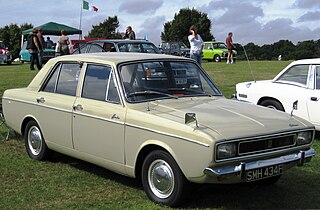
Rootes Arrow was the manufacturer's name for a range of cars produced under several badge-engineered marques by the Rootes Group from 1966 to 1979. It is amongst the last Rootes designs, developed with no influence from future owner Chrysler. The range is almost always referred to by the name of the most prolific model, the Hillman Hunter.

The Hillman Minx was a mid-sized family car that British car maker Hillman produced from 1931 to 1970. There were many versions of the Minx over that period, as well as badge-engineered variants sold by Humber, Singer, and Sunbeam.

Sunbeam Motor Car Company Limited was a British automobile manufacturer in operation between 1905 and 1934. Its works were at Moorfields in Blakenhall, a suburb of Wolverhampton in Staffordshire, now West Midlands. The Sunbeam name had originally been registered by John Marston in 1888 for his bicycle manufacturing business. Sunbeam motor car manufacture began in 1901. The motor business was sold to a newly incorporated Sunbeam Motor Car Company Limited in 1905 to separate it from Marston's pedal bicycle business; Sunbeam motorcycles were not made until 1912.
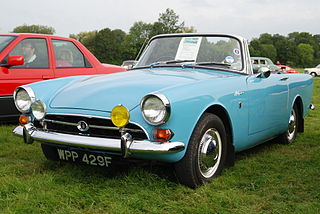
The Sunbeam Alpine is a two-seater sports roadster/drophead coupé that was produced by the Rootes Group from 1953 to 1955, and then 1959 to 1968. The name was then used on a two-door fastback coupé from 1969 to 1975. The original Alpine was launched in 1953 as the first vehicle from Sunbeam-Talbot to bear the Sunbeam name alone since Rootes Group bought Clément-Talbot, and later the moribund Sunbeam from its receiver in 1935.
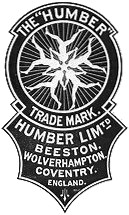
Humber Limited was a British manufacturer of bicycles, motorcycles, and cars incorporated and listed on the stock exchange in 1887. It took the name "Humber & Co Limited" because of the high reputation of the products of one of the constituent businesses that had belonged to Thomas Humber. A financial reconstruction in 1899 transferred its business to Humber Limited.

The Sunbeam Rapier is an automobile produced by Rootes Group from 1955 until 1976, in two different body-styles, the "Series" cars and the later (1967–76) fastback shape, part of the "Arrow" range.

The Humber Super Snipe is a car which was produced from 1938 to 1967 by British-based Humber Limited.

The Rover 10 was a small family car from the British Rover car company produced between 1927 and 1947.

The Rover Meteor was a short-lived 2½-litre or 2-litre medium-sized car made by The Rover Company Limited of Meteor Works Coventry. The new 2½-litre model was announced in mid-February 1930 to supplement Rover's Light Twenty which used the same engine and essentially the same chassis.

The Humber Hawk is a four-cylinder automobile manufactured from 1945 to 1967 by British-based Humber Limited.
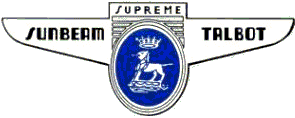
Sunbeam-Talbot Limited was a British motor manufacturing business. It built upmarket sports-saloon versions under the parenthood of Rootes Group cars from 1938 to 1954. Its predecessor Clément-Talbot Limited had made Talbot automobiles from 1902 to 1935.

The Hillman Super Minx is a family car which was produced by Hillman from 1961 to 1967. It was a slightly larger version of the Hillman Minx, from the period when the long-running Minx nameplate was applied to the "Audax" series of designs.

The Sunbeam-Talbot 90 is an automobile which was produced and built by Sunbeam-Talbot from 1948 to 1954 and continued as the Sunbeam Mk III from 1954 to 1957.

The Humber Snipe was a four-door luxury saloon introduced by British-based Humber Limited for 1930 as a successor to the Humber 20/55 hp at the same time as the similar but slightly longer Humber Pullman.
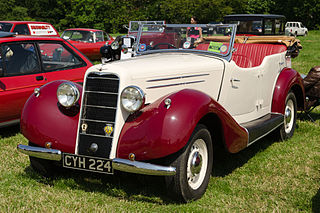
The Hillman Wizard 75, Hillman Twenty 70, Hillman Hawk and their long wheelbase variants Hillman Seven Seater and Hillman 80 models were a series of 20 horsepower medium priced 5-7 seater executive cars made by Hillman during the 1930s.

The Sunbeam-Talbot 2 Litre is an automobile which was manufactured by Sunbeam-Talbot in the United Kingdom from 1939 until 1948. It was offered in 4-light sports saloon, foursome drophead coupé and 4-seater sports tourer body styles as well as a sports 2-seater. Production was suspended due to the Second World War and was resumed in 1945.

The Hillman 16 was a series of 16 horsepower medium priced 5-seater executive cars made by Hillman during the 1930s by installing a smaller engine in their 20-horsepower Hillman 20 range.
The Hillman Straight Eight and its successor the Hillman Vortic were moderate priced mid-sized 20 tax-horsepower executive cars made by Hillman from 1929 to 1930. The lowest priced eight-cylinder car on the market the car was scarcely in full production when sales were hit by the onset of the Great Depression.

























